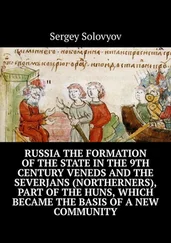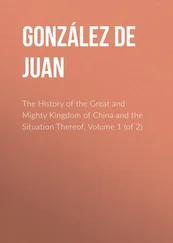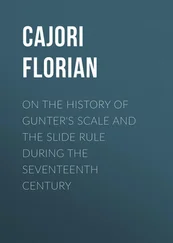Charles Addison - The History of the Knights Templars, the Temple Church, and the Temple
Здесь есть возможность читать онлайн «Charles Addison - The History of the Knights Templars, the Temple Church, and the Temple» — ознакомительный отрывок электронной книги совершенно бесплатно, а после прочтения отрывка купить полную версию. В некоторых случаях можно слушать аудио, скачать через торрент в формате fb2 и присутствует краткое содержание. Жанр: foreign_antique, foreign_prose, на английском языке. Описание произведения, (предисловие) а так же отзывы посетителей доступны на портале библиотеки ЛибКат.
- Название:The History of the Knights Templars, the Temple Church, and the Temple
- Автор:
- Жанр:
- Год:неизвестен
- ISBN:нет данных
- Рейтинг книги:5 / 5. Голосов: 1
-
Избранное:Добавить в избранное
- Отзывы:
-
Ваша оценка:
- 100
- 1
- 2
- 3
- 4
- 5
The History of the Knights Templars, the Temple Church, and the Temple: краткое содержание, описание и аннотация
Предлагаем к чтению аннотацию, описание, краткое содержание или предисловие (зависит от того, что написал сам автор книги «The History of the Knights Templars, the Temple Church, and the Temple»). Если вы не нашли необходимую информацию о книге — напишите в комментариях, мы постараемся отыскать её.
The History of the Knights Templars, the Temple Church, and the Temple — читать онлайн ознакомительный отрывок
Ниже представлен текст книги, разбитый по страницам. Система сохранения места последней прочитанной страницы, позволяет с удобством читать онлайн бесплатно книгу «The History of the Knights Templars, the Temple Church, and the Temple», без необходимости каждый раз заново искать на чём Вы остановились. Поставьте закладку, и сможете в любой момент перейти на страницу, на которой закончили чтение.
Интервал:
Закладка:
The western nations or provinces, on the other hand, from whence the order derived its chief power and wealth, were,
1. Apulia and Sicily, the principal houses whereof were at Palermo, Syracuse, Lentini, Butera, and Trapani. The house of the Temple at this last place has been appropriated to the use of some monks of the order of St. Augustin. In a church of the city is still to be seen the celebrated statue of the Virgin, which Brother Guerrege and three other Knights Templars brought from the East, with a view of placing it in the Temple Church on the Aventine hill in Rome, but which they were obliged to deposit in the island of Sicily. This celebrated statue is of the most beautiful white marble, and represents the Virgin with the infant Jesus reclining on her left arm; it is of about the natural height, and, from an inscription on the foot of the figure, it appears to have been executed by a native of the island of Cyprus, A. D. 733. 111 111 Atlas Marianus , p. 156; Siciliæ Antiq., tom. iii. col. 1000.
The Templars possessed valuable estates in Sicily, around the base of Mount Etna, and large tracts of land between Piazza and Calatagirone, in the suburbs of which last place there was a Temple house, the church whereof, dedicated to the Virgin Mary, still remains. They possessed also many churches in the island, windmills, rights of fishery, of pasturage, of cutting wood in the forests, and many important privileges and immunities. The chief house was at Messina, where the Grand Prior resided. 112 112 Gallia christiana nova, tom. iii. col. 118; Probat. tom. ix. col. 1067, tom. x. col. 1292, tom. xi. col. 46; Roccus Pyrrhus , Sicil. Antiq. tom. iii. col. 1093, 4, 5, 6, 7, &c.
2. Upper and central Italy. – The houses or preceptories of the order of the Temple in this province were very numerous, and were all under the immediate superintendence of the Grand Prior or Preceptor of Rome. There were large establishments at Lucca, Milan, and Perugia, at which last place the arms of the Temple are still to be seen on the tower of the holy cross. At Placentia there was a magnificent and extensive convent, called Santa Maria del Tempio, ornamented with a very lofty tower. At Bologna there was also a large Temple house, and on a clock in the city is the following inscription, “ Magister Tosseolus de Miolâ me fecit … Fr. Petrus de Bon, Procur. Militiæ Templi in curiâ Romanâ , MCCCIII.” In the church of St. Mary in the same place, which formerly belonged to the Knights Templars, is the interesting marble monument of Peter de Rotis, a priest of the order. He is represented on his tomb, holding a chalice in his hands with the host elevated above it, and beneath the monumental effigy is the following epitaph: —
“Stirpe Rotis, Petrus, virtutis munere clarus,
Strenuus ecce pugil Christi, jacet ordine charus;
Veste ferens, menteque crucem, nunc sidera scandit,
Exemplum nobis spectandi cælica pandit:
Annis ter trinis viginti mille trecentis
Sexta quarte maii fregit lux organa mentis.” 113 113 Petrus Maria Campus Hist. Placent. part ii. n. 28; Pauli M. Paciandi de cultu S. Johannis Bapt. Antiq. p. 297.
Portugal. – In the province or nation of Portugal, the military power and resources of the order of the Temple were exercised in almost constant warfare against the Moors, and Europe derived essential advantage from the enthusiastic exertions of the warlike monks in that quarter against the infidels. In every battle, indeed, fought in the south of Europe, after the year 1130, against the enemies of the cross, the Knights Templars are to be found taking an active and distinguished part, and in all the conflicts against the infidels, both in the west and in the east, they were ever in the foremost rank, battling nobly in defence of the christian faith. With all the princes and sovereigns of the great Spanish peninsula they were extremely popular, and they were endowed with cities, villages, lordships, and splendid domains. Many of the most important fortresses and castles in the land were entrusted to their safe keeping, and some were yielded to them in perpetual sovereignty. They possessed, in Portugal, the castles of Monsento, Idanha, and Tomar; the citadel of Langrovia in the province of Beira, on the banks of the Riopisco; and the fortress of Miravel in Estremadura, taken from the Moors, a strong place perched on the summit of a lofty eminence. They had large estates at Castromarin, Almural, and Tavira in Algarve, and houses, rents, revenues, and possessions, in all parts of the country. The Grand Prior or Preceptor of Portugal resided at the castle of Tomar. It is seated on the river Narboan in Estremadura, and is still to be seen towering in gloomy magnificence on the hill above the town. The castle at present belongs to the order of Christ, and was lately one of the grandest and richest establishments in Portugal. It possessed a splendid library, and a handsome cloister, the architecture of which was much admired. 114 114 Description et delices d’Espagne, tom. iii. p. 259; Hist. Portugal, La Clede , tom. i. p. 200, 202, &c.; Hispania illustrata, tom. iii. p. 49.
Castile and Leon. – The houses or preceptories of the Temple most known in this province or nation of the order were those of Cuenca and Guadalfagiara, Tine and Aviles in the diocese of Oviedo, and Pontevreda in Galicia. In Castile alone the order is said to have possessed twenty-four bailiwicks. 115 115 Annales Minorum, tom. v. p. 247; tom. vi. p. 211, 218; tom. viii. p. 26, 27; tom. ix. p. 130, 141. — Campomanes.
Aragon. – The sovereigns of Aragon, who had suffered grievously from the incursions of the Moors, were the first of the European princes to recognize the utility of the order of the Temple. They endowed the fraternity with vast revenues, and ceded to them some of the strongest fortresses in the kingdom. The Knights Templars possessed in Aragon the castles of Dumbel, Cabanos, Azuda, Granena, Chalonere, Remolins, Corbins, Lo Mas de Barbaran, Moncon, and Montgausi, with their territories and dependencies. They were lords of the cities of Borgia and Tortosa; they had a tenth part of the revenues of the kingdom, the taxes of the towns of Huesca and Saragossa, and houses, possessions, privileges, and immunities in all parts. 116 116 Marcæ Hispanicæ, col. 1291, 1292, 1304. Gall. christ. nov. tom. i. col. 195. Mariana , de. reb. Hisp. lib. ii. cap. 23.
The Templars likewise possessed lands and estates in the Balearic Isles, which were under the management of the Prior or Preceptor of the island of Majorca, who was subject to the Grand Preceptor of Aragon.
Germany and Hungary. – The houses most known in this territorial division of the order are those in the electorate of Mayence, at Homburg, Assenheim, Rotgen in the Rhingau, Mongberg in the Marché of Brandenbourg, Nuitz on the Rhine, Tissia Altmunmunster near Ratisbon in Bavaria, Bamberg, Middlebourg, Hall, Brunswick, &c. &c. The Templars possessed the fiefs of Rorich, Pausin and Wildenheuh in Pomerania , an establishment at Bach in Hungary , several lordships in Bohemia and Moravia , and lands, tithes, and large revenues, the gifts of pious German crusaders. 117 117 Script. rer. Germ. tom. ii. col. 584. Annales Minorum, tom. vi. p. 5, 95, 177. Suevia and Vertenbergia sacra, p. 74. Annal. Bamb. p. 186. Notitiæ episcopatûs Middelb. p. 11. Scrip. de rebus Marchiæ Brandeburg, p. 13. Aventinus annal. lib. vii. cap. 1. n. 7. Gall. christ. nov. tom. viii. col. 1382; tom. i. col. 1129.
Greece. – The Templars were possessed of lands and had establishments in the Morea, and in several parts of the Greek empire. Their chief house was at Constantinople, in the quarter called ’Ομόνοια, where they had an oratory dedicated to the holy martyrs Marin and Pentaleon. 118 118 Constantinopolis christiana, lib. iv. p. 157.
Интервал:
Закладка:
Похожие книги на «The History of the Knights Templars, the Temple Church, and the Temple»
Представляем Вашему вниманию похожие книги на «The History of the Knights Templars, the Temple Church, and the Temple» списком для выбора. Мы отобрали схожую по названию и смыслу литературу в надежде предоставить читателям больше вариантов отыскать новые, интересные, ещё непрочитанные произведения.
Обсуждение, отзывы о книге «The History of the Knights Templars, the Temple Church, and the Temple» и просто собственные мнения читателей. Оставьте ваши комментарии, напишите, что Вы думаете о произведении, его смысле или главных героях. Укажите что конкретно понравилось, а что нет, и почему Вы так считаете.












